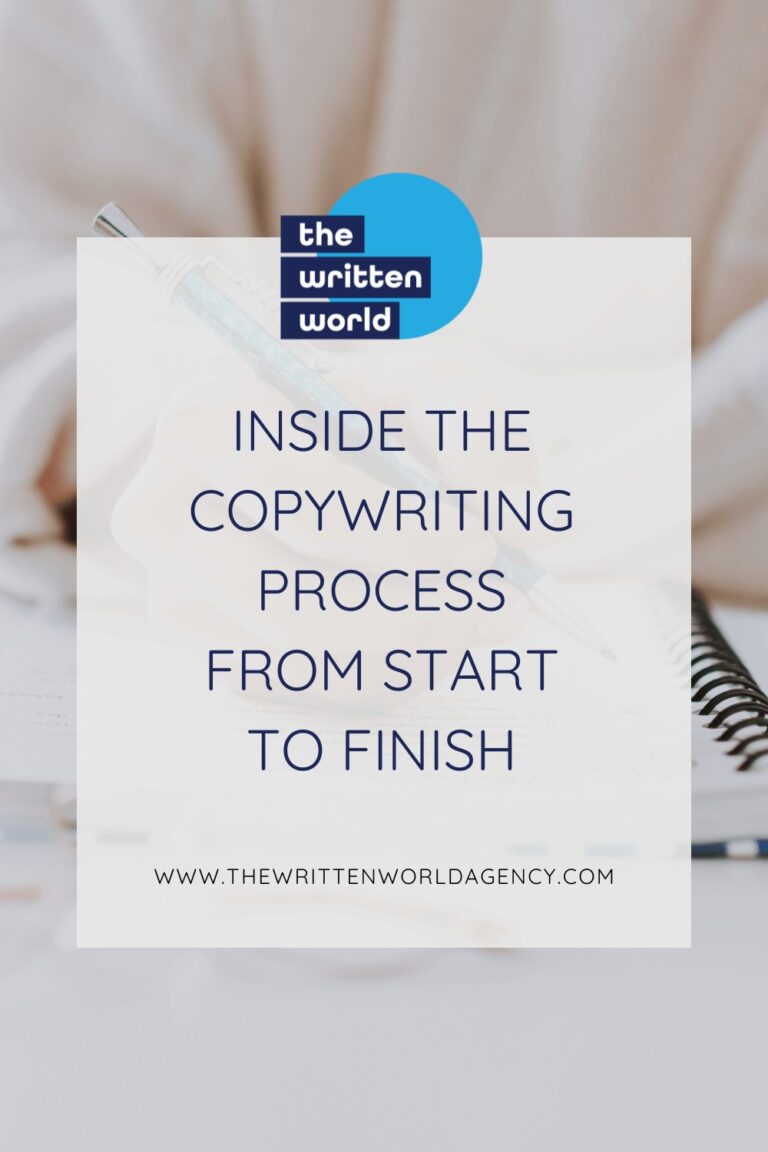Think about the last time you read a captivating book that you couldn’t put down. The first chapter got you hooked, the middle told the story, and the final chapter pulled it all together. The copywriting process in the digital age isn’t all that different in that it tells the story of your brand.
Each blog post, social media caption, and website page should inform and engage your audience from the first word to the last.
Have you ever thought to yourself, “What does a copywriter do?” These master wordsmiths research your brand, then help tell your unique story to your target audience. Understanding the copywriting process leads to an effective content creation strategy. Whatever your brand puts out into the world will directly reflect back onto your business — make it count!
What will be the first chapter of your brand story? We’re taking you to the writer’s room for an in-depth look into the stages of the copywriting process. See how all the elements come together ahead!

Research and Strategy Formation
The first step of the copywriting process doesn’t actually involve writing at all. Thorough research creates the foundation for copy that inspires your audience to take action. If the copywriter isn’t familiar with your brand’s industry, they’re about to become an expert. They want to know everything there is to know about you, your brand, and your ideal customer.
They’ll look at your target audience and get to know all the detailed buyer personas. Next, they’ll take a look at industry trends that your brand should infuse into the content.
Another important part is reading what competitors are writing about to inspire a strategy for your own brand.
Once the initial phase of research is complete, it’s time to provide keyword research services to ensure all content is SEO-optimized. This involves finding keywords that most relate to your brand, industry, and competitors. These SEO keywords will be incorporated throughout your website and blog copy to bring your target audience to you.
Gathering this vital information helps formulate a content strategy — the roadmap of the writing phase.
Crafting the Message: Writing and Structuring
Time to delve into the process of writing! Clarity, engagement, and relevance shape the structure of the copywriter’s content. The research and strategy conducted beforehand help them tailor the messaging to the audience.
One of a copywriter’s superpowers is knowing how to strike the perfect balance between incorporating SEO elements such as keywords and maintaining a natural, reader-friendly tone.
Depending on where the content will be published, the copywriting process will vary slightly for each platform. When it comes to writing website copy, each landing page will have its own structure and purpose.
Beyond routine updates to correct outdated information, each page will remain the same once built.
Writing social media copy involves being a bit more conversational and attention-grabbing. The first line tends to serve as a hook, and the copy is typically brief, incorporating emojis and hashtags throughout.
Oftentimes, the goal of the post is to prompt some sort of engagement from the reader. Once the words are typed out, next up is polishing the copy and tying up any loose ends.
Refinement: Editing, Proofreading, and Finalization
The final phase of the copywriting process revolves around continuously improving the copy. Revisions are integral to correcting any glaring issues.
Run-on sentences, wordiness, grammar errors, and missing punctuation are addressed in the proofreading stage. The writer also revisits specific ideas and thoughts to expand upon, shorten, or eliminate from the text.
Reading and editing the copy ensures clarity, conciseness, and consistency in the content. For blog posts, the writer sticks to an optimal word count length to boost SEO visibility. Website copywriting landing pages should feature calls-to-action throughout.
After writing social media copy, final touches are added, such as tagging and adding line breaks to make the copy easier to read. All of this helps finalize the content, ensuring it aligns with the initial strategy and meets quality standards.
Bringing Your Brand Story to Life through the Copywriting Process
At the heart of the copywriting process and the answer to “What does a copywriter do?” lies copywriters’ ability to give a distinct voice to your brand. It all starts with the research and strategy formation phase, where you can divulge the details of what you envision your brand to sound like.
Then the writing and structuring can begin — here the story of your brand starts developing, growing, and getting ready to be broadcast to the world.
Once your copy transforms from thoughts and concepts to words on a screen, the editing phase marks the last chapter of the copywriting process. But the story is far from over!
After the copywriter delivers your written content, there’s always more stories to be told and ideas to be shared. The copywriting process is designed to continually churn out quality content that delivers results for your brand in the long run.
A perfect blend of creativity, strategy, and precision creates effective copywriting. This is where your brand will be able to connect with your target audience. Actions might speak louder than words, but these words spark that action in the first place. Now it’s time to find the expert copywriters to create your content across your digital marketing outlets.
From your website to your socials, The Written World is ready to craft your copy to perfection. Learn more about our content creation and copywriting services to tell your compelling brand story.







